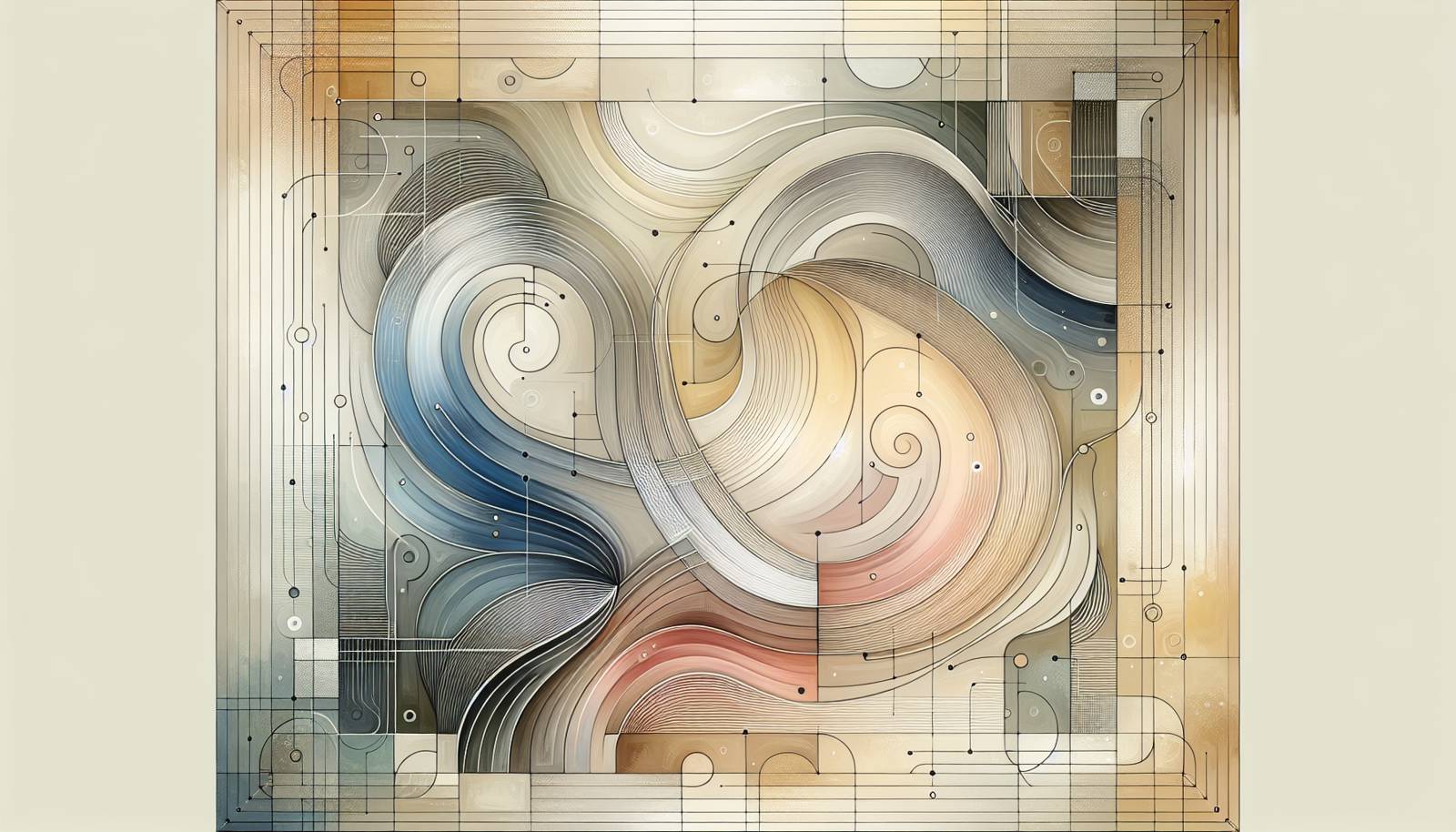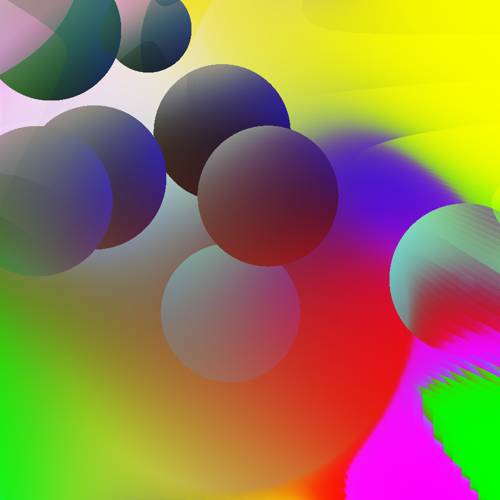
FAQ About The Role of Algorithmic Art in Modern Creativity

What is algorithmic art?
Algorithmic art refers to art that is created using algorithms, which are sets of rules or instructions typically for calculations or problem-solving. Artists use these algorithms to generate designs, patterns, images, or to manipulate digital media. This form of art often involves computational processes and can produce both static and dynamic works, influencing various forms such as visual art, music, and interactive installations.

How does algorithmic art influence modern creativity?
Algorithmic art significantly influences modern creativity by offering new tools and ways of thinking about art creation. It pushes the boundaries of traditional art forms by incorporating technology and mathematics, allowing artists to explore novel ideas and aesthetics. Additionally, it enables the creation of complex patterns and dynamic visuals that are often difficult to achieve manually. This blend of technology and art has led to innovative practices in digital and interactive media.

What technologies are commonly used in creating algorithmic art?
Common technologies used in algorithmic art include various programming languages such as Python and JavaScript, software like Processing and Adobe Creative Suite, and other digital platforms that support algorithm-driven design. These tools allow artists to write code that generates artwork or modifies images and sounds based on predefined algorithms. Hardware like computers, graphic tablets, and advanced rendering engines also play a role in creating and displaying algorithmic art.

Can algorithmic art be considered true art?
Yes, algorithmic art is widely considered true art, as it involves creativity, skill, and expression, much like traditional art forms. The use of algorithms in the art-making process is seen as an innovative tool rather than a separate medium. While the role of technology in art creation is debated, many parts of the art world embrace algorithmic art for its ability to expand the possibilities of creative expression.

What are some examples of algorithmic art?
Notable examples of algorithmic art include works by artists like Manolo Gamboa Naon, who creates intricate patterns using mathematical algorithms, and Casey Reas, one of the creators of the Processing programming language, known for his generative artworks. Other examples include fractal art, where mathematical sets are used to produce complex, naturally beautiful patterns, and digital installations or video art that evolve or respond to viewer interactions.

How did algorithmic art originate?
Algorithmic art has its roots in the mid-20th century with artists and mathematicians exploring the aesthetic potential of mathematics and computing technology. Early pioneers like Frieder Nake and Vera Molnár began experimenting with computer-generated art in the 1960s, using basic computer programs to create abstract compositions. As technology evolved, so did the complexity and variety of algorithmic art forms.

What role does randomness play in algorithmic art?
Randomness is a fundamental aspect of many algorithmic artworks, introducing an element of unpredictability that can result in unique and individual pieces even from the same underlying code. Artists may use algorithms to incorporate random variations in color, shape, or form, allowing each iteration of the artwork to differ slightly from others, thereby creating a diverse and dynamic range of art.

How is algorithmic art different from traditional art forms?
Algorithmic art differs from traditional art forms in its use of mathematical algorithms and digital technology to create art, as opposed to relying solely on the artist's manual skills. This type of art often involves a procedural approach, where the artist designs a system or process that generates the artwork, as opposed to directly crafting each piece. This allows for experimentation with form, variation, and complexity that can automatically evolve or change over time.

What is generative art, and how does it relate to algorithmic art?
Generative art is a subset of algorithmic art where artists create systems—such as computer programs—that can independently generate art. The terms are often used interchangeably, but generative art specifically emphasizes the autonomous process of art creation. Artists design algorithms that encode stylistic preferences and rules, allowing the generative system to produce a variety of outcomes, often with elements of randomness or evolution included in the design.

Why do artists choose to work with algorithms?
Artists choose to work with algorithms to explore new creative possibilities and push the boundaries of traditional artistic expression. Algorithms enable the creation of complex, intricate designs that would be labor-intensive or impossible to reproduce manually. Additionally, they offer the opportunity to engage with technology as a medium, integrating contemporary scientific and technological advances into the art-making process, thus broadening the scope of artistic exploration and innovation.

What challenges do artists face when creating algorithmic art?
Artists face several challenges when creating algorithmic art, including the technical learning curve associated with coding and mastering digital tools. Developing a robust understanding of mathematics and programming is often required to create sophisticated algorithms. Artists also grapple with conceptual challenges, such as defining the balance between control and randomness in their work, and addressing questions concerning the authorship and originality of computer-generated art.

How is algorithmic art used in modern media?
Algorithmic art is widely used in modern media, including digital animations, video games, virtual reality environments, and interactive installations. By leveraging algorithmic processes, media creators can produce complex, dynamic visuals and interactive experiences that would be difficult to achieve manually. This art form enhances user engagement and provides unique aesthetic experiences in various digital and interactive platforms.

Is algorithmic art widely accepted in the art community?
Algorithmic art is increasingly accepted within the art community, with growing recognition of its innovative potential and artistic value. Many art institutions, galleries, and festivals feature algorithmic and generative works, celebrating the diverse practices of contemporary digital artists. As technology becomes more integrated into everyday life, the acceptance and appreciation of algorithmic art continue to expand.

How do museums and galleries showcase algorithmic art?
Museums and galleries often showcase algorithmic art through exhibitions featuring digital installations, interactive screens, and projections. These venues may include displays of real-time generative pieces, where the artwork evolves dynamically as it is viewed. Special equipment, such as high-resolution projectors and digital displays, may be utilized to present this type of art, offering audiences immersive and engaging experiences with the art pieces.

What skills are required to create algorithmic art?
Creating algorithmic art requires a combination of creative and technical skills. Artists typically need knowledge of programming languages, like Python or JavaScript, and a good understanding of mathematics to develop effective algorithms. Familiarity with digital art tools and software that supports algorithmic processes is also essential. Beyond technical skills, artists must possess creativity, a sense of aesthetics, and an ability to conceptualize how mathematical concepts can translate into visual art.

Can anyone learn to create algorithmic art?
Yes, anyone with an interest in both art and technology can learn to create algorithmic art. There are numerous online resources, tutorials, and courses available that teach the fundamentals of programming and digital design relevant to algorithmic art. While a background in mathematics and coding may be beneficial, dedicated learning and practice can equip most individuals with the skills needed to create their own pieces of algorithmic art.

What is the future of algorithmic art?
The future of algorithmic art looks promising as technology continues to advance. As tools become more sophisticated and accessible, more artists are likely to incorporate algorithmic processes into their creative practices. Artificial intelligence and machine learning may further enhance the capabilities of algorithmic art, opening up even broader possibilities for creativity, customization, and user interaction. Additionally, new platforms for showcasing such art, like augmented and virtual reality, are expected to grow, providing richer experiences.

How is artificial intelligence influencing algorithmic art?
Artificial intelligence (AI) is increasingly influencing algorithmic art by providing more advanced tools for creating and manipulating artworks. AI algorithms can analyze large datasets to generate art that adapts to viewer interactions or evolves over time. This introduces possibilities like style transfer, where AI mimics the aesthetic characteristics of famous artworks to generate new pieces, or autonomous systems that produce art independently, enhancing the depth and breadth of algorithmic art.

What are some popular software tools for algorithmic art?
Some popular software tools for creating algorithmic art include Processing, an open-source graphical library and integrated development environment (IDE) built for the electronic arts and visual design communities. Other tools include p5.js, a JavaScript library inspired by Processing, and algorithms written in Python using libraries like Matplotlib and NumPy to generate designs. Adobe Creative Suite programs are also commonly used alongside custom algorithms for enhanced digital creativity.

Can algorithmic art be interactive?
Yes, algorithmic art can be interactive. By designing artworks that respond to user inputs or environmental factors, artists create dynamic experiences that engage audiences uniquely. Interactive algorithmic art often uses sensors, cameras, or input devices to alter visuals or sound in real-time, challenging traditional passive viewing and allowing participants to contribute to the artwork's evolution and experience.
